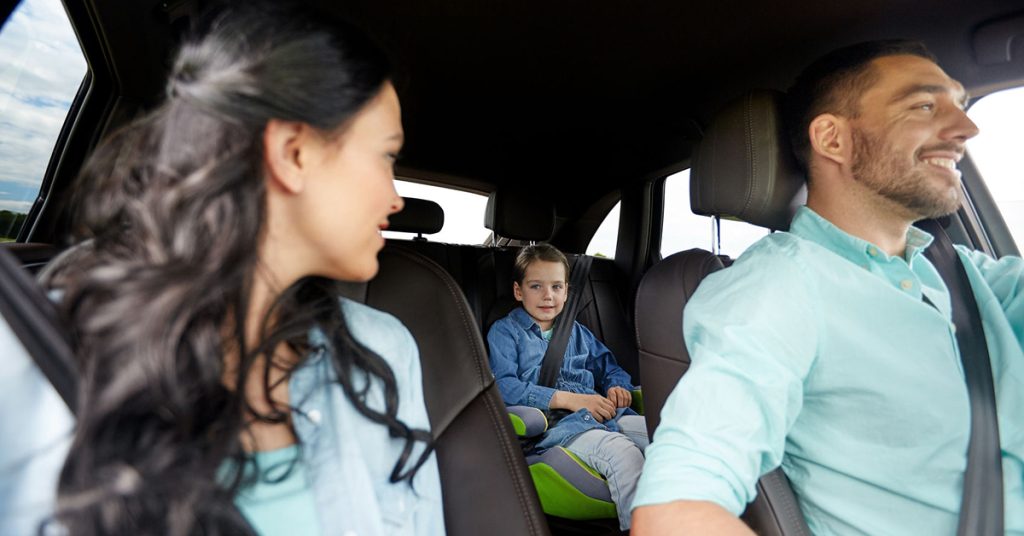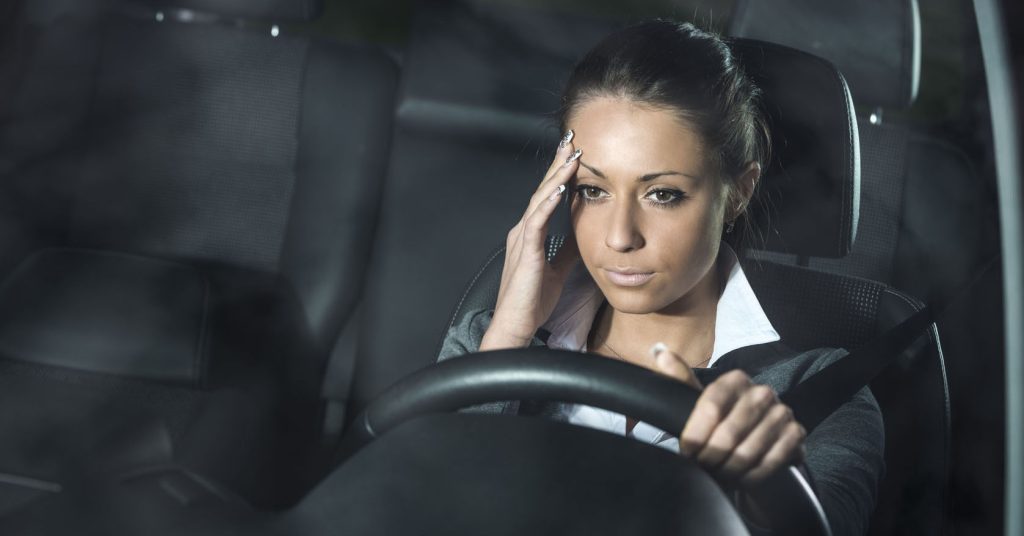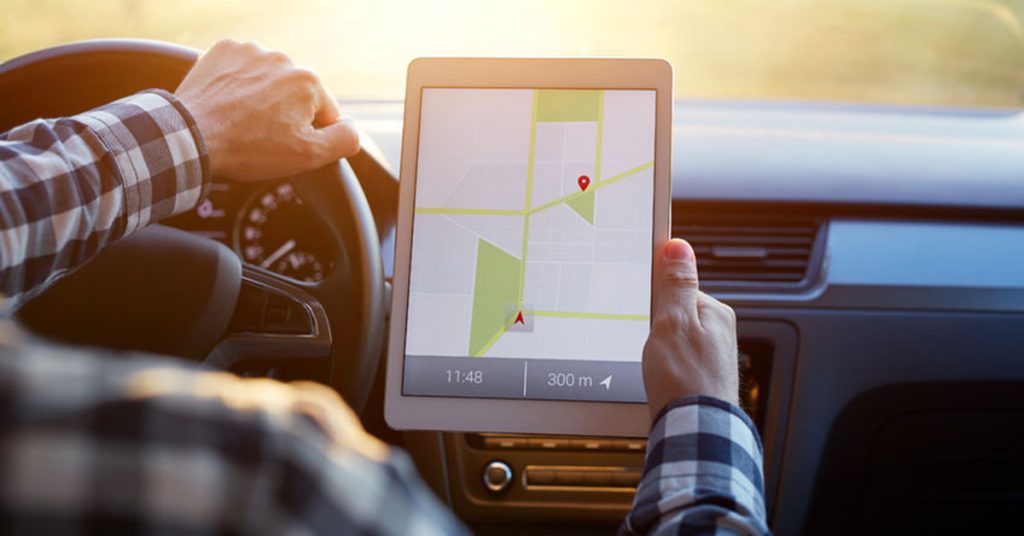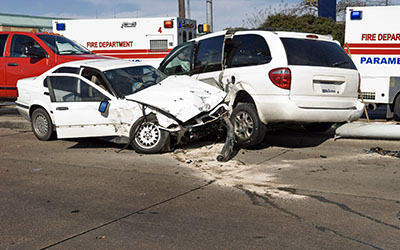Car Accidents
Hit and Run Crashes Reach Record High; Cyclists and Pedestrians Suffering Nearly 65 Percent of Injuries
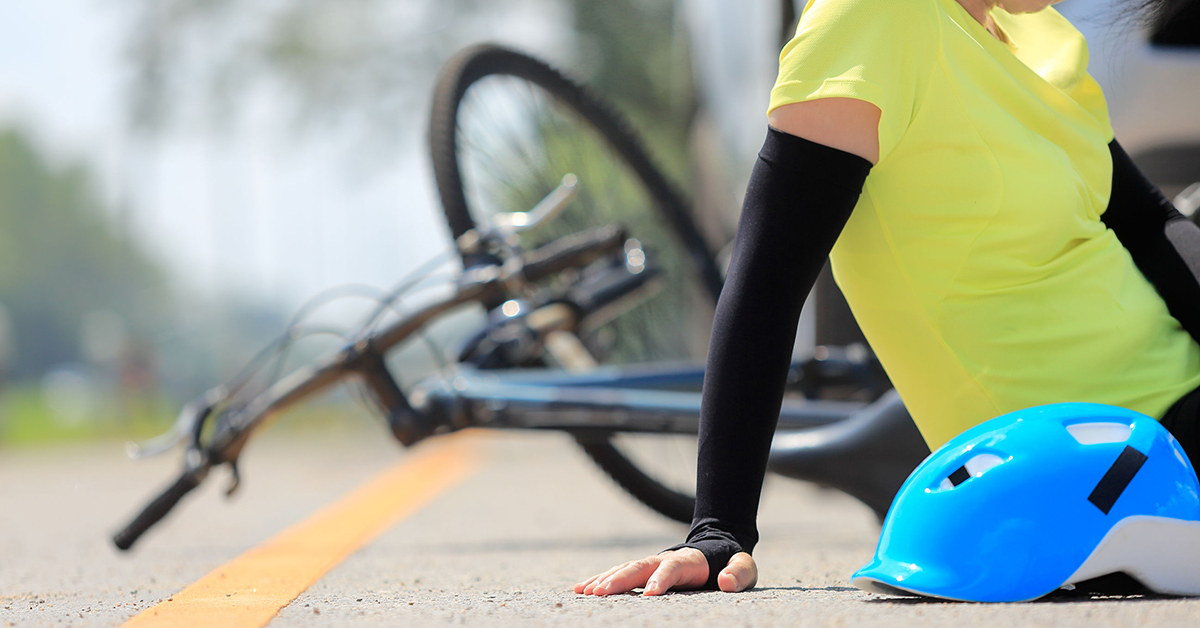 National Bike Month is a time to celebrate and champion cycling. If you live in Massachusetts, you know the cycling spirit is stronger than ever. But that doesn’t mean conditions are always safe.
National Bike Month is a time to celebrate and champion cycling. If you live in Massachusetts, you know the cycling spirit is stronger than ever. But that doesn’t mean conditions are always safe.
In fact, cyclists and pedestrians are at a higher risk now than ever. The National Highway Traffic Safety Administration reports cycling deaths increased 11 percent from 2015 to 2016. Pedestrian deaths rose 9 percent. The AAA Foundation for Traffic Safety recently weighed in with a report on hit and run crashes. The numbers show the toll on pedestrians and cyclists, as well as others on the road.
- There is now more than one hit and run crash every minute in the U.S.
- Nationwide, fatal hit and run crashes have been increasing since 2009, reaching an all-time high in 2016. Some 2,049 people were killed.
- In nearly 65 percent of cases, pedestrians and cyclists were killed.
- All 50 states have hit and run laws, which make it illegal for drivers to leave the scene of an accident.
- According to the Telegram & Gazette of Worcester, there were 186 hit and run crashes involving death in Massachusetts over the 10-year period from 2006 to 2016.
In Massachusetts, leaving the scene of an accident is against the law, under M.G.L. c. 90 § 24 and M.G.L. c. 90 § 26. Drivers can face potential jail time for leaving the scene of a car accident resulting in property damage, even if there is no injury. When there is injury and death, drivers face higher penalties, including up to 10 years in jail if someone is killed.
Beyond the punishment, drivers have a moral obligation to stay at the scene, make sure the victim receives medical attention and help police with their investigation. When they flee, victims have to wait for medical care and the delay could cost them their lives.
In Massachusetts, just in the past month, several pedestrians have been killed by the negligence of hit and run drivers.
In Medford, a real estate agent was walking along Spring Street, when she was fatally struck by a teen driver who was allegedly under the influence of a drug, according to Boston 25 News. The teen – who was operating with a learner’s permit – kept going, then collided with two other people. They were injured, but survived. Their dog was killed in the crash.
Police also responded to tragedies in Lawrence and Revere. In Revere, a woman was struck while walking on Revere Beach Parkway. As she was treated for critical injuries, police searched for the driver. Police in Lawrence made the arrest in a hit and run crash that seriously injured a 30-year-old woman. The 24-year-old driver is accused of operating under the influence when he crossed an intersection, hitting the woman in a crosswalk.
Along with motorists, truck drivers cause an increasing number of hit and run crashes each year. Cyclists and pedestrians can be cut off by trucks and swept under, causing catastrophic injuries and deaths. In Massachusetts, bicycle advocacy groups have pushed for legislation requiring trucks to be outfitted with sideguards. The City of Boston has passed its own truck sideguard regulations.
Drivers who operate rideshare vehicles, such as Uber and Lyft, taxicabs and buses can also cause hit and run crashes. Hit and run crashes can also be caused by teenage drivers, who have less experience and have higher accident rates than other drivers.
As a driver, the best thing you can do is commit to pay attention on the road and travel slowly, giving yourself more time to respond. Turn your cell phone off. Follow traffic laws and look for cyclists and pedestrians on the side of the road. Take special care not to cut cyclists off when turning at intersections. When fatigued, do not drive. Finally, if you are in an accident, do not run. Help the victim by calling 911. That has to be the priority.
About Breakstone, White & Gluck
With more than 100 years combined experience, the lawyers of Breakstone, White & Gluck are experienced in representing cyclists and pedestrians who have been injured in motor vehicle and truck crashes. Our attorneys represent clients throughout Massachusetts, including in Boston, Cambridge and Quincy. We are known for our prompt investigation and aggressive representation for our clients. If you have been injured, learn your rights. For a free legal consultation, call 800-379-1244 or 617-723-7676. You can also use our contact form.
Attorney Reza Breakstone: “The Self Driving Car: Science Fiction Becomes Reality, Creating a Legal Quandary”

Attorney Reza Breakstone of Breakstone, White & Gluck in Boston.
A self-driving Uber vehicle has been involved in a fatal pedestrian crash in Arizona. Attorney Reza Breakstone’s article explores liability when self-driving cars crash: https://tinyurl.com/y8qrfs69.
Ford Recall: Drivers Say Steering Wheels Have Come Off While Driving On Highway

Attorney David W. White specializes in personal injury and product liability cases at Breakstone, White & Gluck of Boston.
Ford drivers are gripping the steering wheel anxiously after the automaker’s stunning safety recall this week. 1.4 million Ford vehicles have been recalled because the bolts on the steering wheels can become loose. Ford will repair the vehicles, but not until the end of April at least.
“This recall is very upsetting,” said Attorney David W. White of Breakstone, White & Gluck. “Nothing is more basic to a car than a steering wheel. Automakers have a responsibility to fully test vehicles and all equipment before bringing them to market. They continue to fail drivers.”
This recall affects 2014-2018 models of the Ford Fusion and the Lincoln MKZ. According to Consumer Reports, Ford’s customer-service phone number is 866-436-7332 and Lincoln’s customer service phone number is 800-521-4140.
Ford has said it will replace the steering wheel bolt and install a larger nylon patch to maintain pressure. A company spokeswoman said consumers will be notified by mail the week of April 30th.
In announcing the recall, Ford said it was aware of two car accidents related to the defective steering wheels, one involving injury. This is not the full story though. After reviewing federal records, USA Today reported the National Highway Traffic Safety Administration has received more than 45 reports of the steering wheels becoming loose or falling off, some resulting in car crashes.
One driver said the steering wheel on his 2014 Ford Fusion became unstable and he drifted into a manhole, destroying his vehicle. Others said they had the frightening experience of having steering wheels come loose as they drove down the highway. One driver said all he did was bump the steering wheel with his knee and it came off.
Once a manufacturer determines there is a safety defect, it has 5 days to notify the NHTSA. Automakers are then responsible for recalling defective motor vehicles or equipment.
Americans may associate Toyota, General Motors and Takata with most auto recalls. Yet Ford has made its own headlines for safety defects. Last year, it recalled 1.3 million F-150 Super Duty pick-up trucks with faulty door latches last year. Consumers reported the doors were swinging open while the vehicles were in operation. It also issued smaller recalls fixing more door latches and to stop cars from overheating. The company had received 29 reports of engines overheating and catching fire in some vehicles with 1.6-liter GTDI engines.
At Breakstone, White & Gluck, our Boston personal injury lawyers have investigated serious car and truck crashes caused in part by defective parts. We have over 100 years combined experience representing individuals injured by car crashes, truck accidents and other traffic collisions in Boston and throughout Massachusetts. Many of our car accident and other personal injury cases involve product liability claims and investigation into dangerous and defective products.
| Highlighted Cases | |
|---|---|
| $3 Million Settlement in Tractor-Trailer Crash Breakstone, White & Gluck negotiated a $3 million settlement for our client, who was hit by a tractor-trailer truck owned and operated by a beverage distributor. Read more about the case and the investigation of the truck. |
|
| $1.15 Million Settlement in Defective Fitness Equipment Injury Breakstone, White & Gluck negotiated a $1.15 million settlement for our client who was seriously injured while using defective fitness equipment at a local gym. The trainer who was supervising our client was also negligent in a number of ways. Read more. |
|
Contact Breakstone, White & Gluck
If you have been injured, learn your rights. For a free legal consultation, contact our Boston personal injury lawyers at 800-379-1244 or 617-723-7676 or use our contact form.
Study Says Americans Are Checking Smart Phones Every 12 Minutes

Americans are checking their cell phones every 12 minutes, according to new research. This means more distraction, including in the car.
As we wait out this snowstorm, you may be checking your smart phone more than usual. This is understandable. But how often do you check on an average weekday? One report shows Americans are checking their smart phones every 12 minutes or 80 times a day. And between Facebook, Twitter and e-mail, we all know someone who may check even more often.
Use your smart phones as often as you want – except in the car. Please consider these thoughts as you wait out the snow:
Can I receive a ticket for using my cell phone in the car in Massachusetts?
In 15 states, drivers are banned from all cell phone use in the car. In Massachusetts and 46 other states, drivers are banned from texting while driving. Massachusetts has banned texting while driving since September 30, 2010, when the Safe Driving Law took effect. However, talking on a handheld cell phone is legal in Massachusetts, even though any cell phone use can be distracting and cause a car accident.
Drivers can receive a ticket if they are stopped for texting while driving. The ticket comes with a fine of $100 for the first offense, $250 for the second offense and $500 for a third or subsequent offense. Junior operators – drivers who are 16 1/2 to 18 years old – are not allowed to use cell phones at all and face more severe penalties, starting with a 60-day license suspension, a $100 fine and attitudinal retraining for the first offense.
For the second offense, teens can lose their license for 180 days and have to pay a $250 fine. For the 3rd of subsequent offense, they lose their license for a year and have to pay a $500 fine.
How often are people using smart phones?
Very often. Asurion, a global tech company, reported on smart phone user habits last November. The company surveyed 2,000 users and found they reached for their phones on average every 12 minutes or 80 times a day. One in 10 people checked their phone every four minutes. In addition, 31 percent of survey participants had separation anxiety when away from their phones. The longest any participant was prepared to go without their phone? Four hours (that one sounds fairly reasonable to us, if you are not driving).
Participants also prioritized their smart phone over sweets. Some 62 percent said they would rather lose chocolate for a week than their cell phone for a day.
How often are people using cell phones in the car?
Zendrive, a driving analytics company, conducted a three-month analysis of three million drivers. The company reported drivers used cell phones on 88 percent of the trips analyzed. On average, drivers spend 3.5 minutes on the phone per one hour trip.
How can I stop my teenager from texting while driving?
Your teenagers may use their cell phones more often than anyone else in your house. You may want to encourage your teenager to take breaks from their smart phone so it doesn’t have such a strong hold.
You can also make your teen earn their driving privileges. Gradually build up to allowing them to drive with friends or go further than school so they understand that it is a responsibility. You can also explain the law. In Massachusetts, junior operators – drivers between 16 ½ and 18 years old – face harsher penalties for cell phone use and texting. As we mentioned above, they can lose their license on the first offense.
Then, you can share safety resources and tell them you want to save them from the life-changing experience of injuring someone or causing themselves harm. AT&T has its It Can Wait campaign, which shows stories from drivers who made the mistake and the victims who suffered the very serious consequences.
Finally, you can set a good example for your teenager. Always put your cell phone in your bag in the backseat when you are driving with them.
The good news about cell phones is you can turn them off and everyone in your family will be safer. Here are a few tips for when you step back outside after the storm:
- Turn your cell phone off while driving.
- Limit use of Bluetooth devices and infotainment systems. They are legal, but they can still be distracting.
- Take a few apps off your cell phone so you have fewer reasons to reach for your phone.
- If you play games on your cell phone, consider installing them on a different device if you have one. Play them at home.
- Do not be a distracted passenger. Make light conversation or carry a magazine if you are traveling far.
- Ask your family members to put the phone away too.
- Map out your directions before you get in the car. If you are busy, ask your teenager to help you.
- If you must check your cell phone, pull over in a safe place to check your phone. Choose a place where you can safely park and turn off your engine.
- Do not reach for your cell phone or glance at it at traffic lights or intersections.
- Finally, choose your times to engage in social media. Do not actively engage before you start commuting home. Instead, come up with a time each day (or a few times a day) when you can safely respond or chat with social media friends or check e-mail.
About Breakstone, White & Gluck
The Boston car accident lawyers at Breakstone, White & Gluck have over 100 years combined experience representing those who have been injured in motor vehicle crashes in Massachusetts. If you have been injured, learn your legal rights. For a free legal consultation, contact our attorneys at 800-379-1244 or 617-723-7676 or use our contact form.
Preventing Injuries: Check Your Seat Belts and Child Passenger Safety Seats
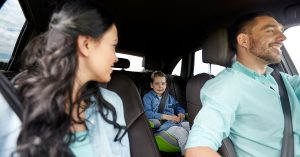 There is nothing more important than protecting your family and other passengers in the car. Many of us drive less often in the winter in Massachusetts. But in a few weeks, families will be back in the car more for afterschool sports, activities and weekend trips.
There is nothing more important than protecting your family and other passengers in the car. Many of us drive less often in the winter in Massachusetts. But in a few weeks, families will be back in the car more for afterschool sports, activities and weekend trips.
Take a few minutes now to inspect your vehicle’s seat belts and child passenger safety seats. Make sure this equipment is working and properly adjusted to fit each child. Replace car seats if your children have outgrown them. Then talk to your family about the importance of always wearing a seat belt.
Dangers on the Road for Children
- Roughly 3 children in the U.S. die each day as a result of motor vehicle accidents, according to the National Highway Traffic Safety Administration (NHTSA).
- Car accidents increased 5.6 percent nationwide from 2015 and 2016. Child deaths in motor vehicle accidents increased 8 percent.
- Children were occupants in 74 percent of fatal car accidents in 2016. They were pedestrians in 20 percent of cases and were on bikes in about 5 percent of cases.
Seat Belt: Buckle Up, Every Ride
Your car should have working seat belts. Do a visual inspection and also sit in each seat while buckling up. If your seat belts are not working, call your auto dealer to have them repaired. Then, wear your seat belt on every trip, no matter how short. Insist your children and other passengers do as well. Drivers carry a lot of influence when it comes to seat belt use, especially parents.
Properly buckle your children in, especially when they are just transitioning from booster seats to seat belts. As they get older, they will start to buckle themselves in, but continue to check their seat belt before you start driving, even if just from the front seat. You want to make sure the straps are not tangled or jamming. Buckle up unused seat belts to discourage children from playing with them. Always lock your power windows so children cannot operate them from the backseat and finally, never leave your children alone in motor vehicles to play with seat belts unsupervised in your vehicle.
Watch this video to see how to buckle your child in:
Teenagers may need the most reminders, whether they are passengers or drivers. In 2016, 47 percent of young drivers who died in crashes were not wearing seat belts, according to the NHTSA. As a parent, you have to teach your teenager to be both a safe driver and a safe passenger and always, always wear seat belts. The decisions your children make while driving with friends are critical.
Massachusetts Law on Seat Belts
In Massachusetts, children must start wearing seat belts at age 8 or when they outgrow their child passenger safety seat.
The Massachusetts seat belt law requires drivers and passengers to wear seat belts while traveling in the front and back of vehicles. According to the Governors Highway Safety Association (GHSA), Massachusetts is one of 15 states which have a secondary enforcement seat belt law. While seat belts must be worn, drivers can only be cited for a seat belt violation after they are stopped for an unrelated traffic offenses. In primary enforcement states, drivers can be pulled over solely for not wearing a seat belt.
Seat belt use was 89.7 percent in 2017, according to the NHTSA. This increased about 5 percent from 2009, which is good news. Except that seat belt use was the lowest in the Northeast. Some 86.5 percent of drivers and passengers buckled up, compared to 94.5 percent out West. The best thing you can do is go for a 100 percent seat belt rate in your car.
Child Safety Seats: The Challenge
Car accidents are the leading cause of death for children and teenagers, according to the Centers for Disease Control and Prevention (CDC). Safe Kids Worldwide reports child passenger safety seats can reduce the risk of death by 71 percent. The problem is car seats can be hard to install, expensive and are frequently recalled.
Massachusetts has a Child Passenger Safety Seat law to protect young passengers:
- Children who are younger than 8 years old (or under 57 inches tall) must use an age-appropriate federally-approved child safety seat.
- Child safety seats should be placed in the back seat (if your vehicle doesn’t have a back seat, you can’t install the car seat in the front seat).
- Older children must wear a seat belt. It is recommended that children sit in the back seat until they reach age 13.
Parents must use an age appropriate car seat. Infants typically use a rear-facing car seat until age 2, then grow into a forward facing car seat and then a booster seat. Check these guidelines for help purchasing a child passenger safety seat.
Help Finding the Right Child Passenger Safety Seat
Common Mistakes in Fitting Car Seats
- Rear-facing infant/convertible seats are often installed with the wrong amount of incline while forward-facing car seats can be fit too loosely.
- A forward-facing seat should not be able to move more than an inch laterally. In one study, the NHTSA found more than 17 percent of forward-facing car seats were able to move more than 2 inches.
- A common mistake with booster seats is the lap belt position. Lap belts should sit on the child’s hips and thighs, not the abdomen or rib cage.
Source: NHTSA, National Child Restraint Use Special Study, June 2015
Where You Can Find Help
If you are having trouble with your car seat installation, ask if your local police department offers free car seat inspections. You can also check this website to find other resources in the area.
Child Car Seat Safety Information from Manufacturers
Register your child safety seats with the manufacturer so you will be notified if there is a recall. Even when you carefully research a product, these recalls can and do happen. Graco has recalled millions of child car seats, most for unsafe buckles, but also other defects. Other manufacturers have issued recalls when seats have failed to mount and when pieces posed a potential choking hazard.
Finally, read the manufacturer’s instructions for set up and check the expiration date. Many people do not realize that car seats have an expiration date.
About Breakstone, White & Gluck
For more than 30 years, the lawyers of Breakstone, White & Gluck have represented individuals and families who have been injured by negligent and reckless drivers in Massachusetts. Our Boston car accident lawyers are committed to fighting for justice for every client and have been consistently recognized for our results by Super Lawyers, U.S. News – Best Law Firms and Martindale Hubbell.
For a free legal consultation, contact us at 800-379-1244 or 617-723-7676 or use our contact form.
Parents: Does Your College Student Think Drowsy Driving is Dangerous?
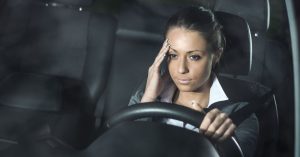
A new study shows college students are engaging in drowsy driving and do not consider it to be as dangerous as texting while driving and operating under the influence.
As a parent, you have probably talked to your college student about the risks of drunk driving and texting while driving on many occasions. What about drowsy driving? A new study reports college students are not taking this risk as seriously – even as drowsy driving causes an estimated 300,000 traffic crashes each year in the U.S.
The study was published in the February edition of the journal Sleep Health. Researchers conducted four focus groups involving 26 undergraduate students in 2016. Students were asked about their driving behaviors and perceptions about dangerous driving.
Most of the students considered themselves safe drivers, yet they viewed drowsy driving as less risky than operating under the influence of alcohol and distracted driving. Students actually said drowsy driving was “normal” and an “unavoidable part of their lives.” They admitted to drowsy driving in the past. Whether as a driver or passenger, many had actually been in some way involved in a drowsy driving car crash or near accident. In most cases, students were driving alone in the early morning or at night.
Massachusetts Communities Fight Back Against Traffic Detour Apps
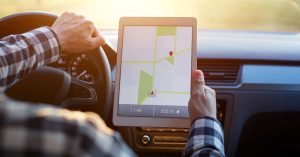
Local communities are restricting road use to stop the flood of drivers who use Waze and other traffic apps.
Commuting is a battle in Massachusetts, full of frustrations and hazards. But residents, communities and lawmakers continue to fight back to improve safety.
On Monday, the state House of Representatives considered a controversial bill proposing new fines for jaywalking and jaywalking while distracted (or as The Boston Globe writes, “Jay-texters”). Meanwhile, WBZ reports communities are closing off roads in response to traffic apps such as Waze and Google Maps.
Jaywalking Bill. On Beacon Hill, Rep. Colleen M. Garry, D-Dracut, has proposed Bill H.1834, which would allow cities and towns to impose stronger penalties against jaywalking. The current penalty is $1, which isn’t much of a deterrent. But this new bill proposes:
- Jaywalkers may be fined $25 for a first offense, $50 for a second offense and $100 for a third or subsequent offense.
- The proposal calls for new and increased fines for pedestrians who violate the jaywalking law and are using mobile devices or earphones. Using a mobile device will increase the fine to $50 for a first offense, $100 for a second offense and $200 for a third or subsequent offense.
Massachusetts is not the only state considering action. In New York, the State Assembly passed a law for New York City to study the problem. As of last month, the City of Honolulu began ticketing pedestrians who are texting or reading from a cell phone. The price? Up to $99 per violation.
While pedestrian texting bans are new, 47 states and Washington D.C. now have laws which ban texting while driving. Puerto Rico, Guam and the U.S. Virgin Islands also have bans. Massachusetts passed its texting while driving ban in 2010.
This is a controversial topic. We will be among those watching the State House this week.
Traffic Detour Apps. WBZ reported on Monday that drivers are continuing to make use of apps such as Waze and Google Maps, which help them find the shortest route (Note: Waze was actually acquired by Google in 2013). But regardless of the specific brand name, police departments say these apps are a safety issue because they change traffic flow and draw large amounts of traffic to residential roads.
Now cities, such as Medford, Cambridge, Brookline and Belmont have taken action, by closing off roads or posting no turn signs.
Here are a few notes for your commute:
- In October, Medford Police announced Bracket Street at Elm Street is residents only on weekdays from 7 a.m. to 9 a.m. and 4 p.m. to 6 p.m.
- Belmont has installed no right turn signs off Brighton Street.
- Brookline has restricted access to several roads off Clyde Street.
- In Cambridge, Fresh Pond Parkway is also closed to through traffic.
These are two stories for every commuter to follow. We will write more about both topics in the weeks and months to come.
About Breakstone, White & Gluck
The Boston car accident attorneys at Breakstone, White & Gluck have over 100 years combined experience representing pedestrians, cyclists, drivers and passengers who have been injured by negligent drivers. If you or a loved one has been injured, learn your rights for seeking compensation. After a car accident, you may incur medical expenses, have to take time off from work and no one can predict how long recovery will take. For these reasons, it is important to contact an experienced Boston car accident lawyer.
For a free legal consultation, contact our attorneys at 800-379-1244 or 617-723-7676 or use our contact form.
Parking Lot Accidents Are Common in Massachusetts
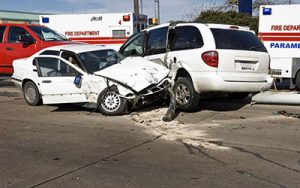
There was a sad story in Westford over the weekend, when a woman was hit and killed in a Market Basket parking lot. Police are still investigating, but according to media reports, the 64-year-old woman was putting groceries into the back of her Toyota Highlander SUV, which was hit by another vehicle. The impact caused her SUV to roll back on top of her.
This is not an isolated accident. Parking lot accidents and backovers are frequently reported in every community in Massachusetts, from Boston and Cambridge to Worcester and Framingham. But the latest accident raises the questions: have parking lots become as dangerous as the roads? And what can be done to improve safety? We should all be able to shop safely.
AAA reports 14 percent of all car accidents take place in parking lots. These can range from minor incidents, such as fender benders or someone opening a car door and hitting another vehicle. Other times, someone is seriously injured or killed, from backovers or speeding drivers.
AAA reports distracted drivers are contributing to parking lot accidents. Drivers are more focused on talking to other passengers, turning the radio dial or checking their cell phone. Others are too focused on finding the best parking spot.
In Massachusetts, parking lot car accidents have been reported in Acton, Wilmington and Natick.
- Acton Pedestrian Death at Trader Joe’s. In March 2017, an employee leaving Trader Joe’s in Acton was hit by a customer backing an SUV out of a parking space.
- Wilmington Parking Lot Accident. In September 2016, an elderly woman hit and killed a 52-year-old woman in a crosswalk near Rite Aid in Wilmington, then struck two parked cars.
- Natick Shopping Plaza Parking Lot Death. In November 2015, a speeding driver tore through the parking lot outside the Cloverleaf Mall in Natick, just across the street from the Natick Collection (or the old Natick Mall). She went right up onto the sidewalk, hitting and killing a pedestrian outside Harbor Freight Tools. Several others were seriously injured in the car crash.
- Snow Plow Parking Lot Accidents. Snow plow drivers often neglect to look for pedestrians on streets, parking lots and around snowbanks. Vehicles with engines are much easier for snow plow operators to see, but snow plow operators have a responsibility to use reasonable care and look for pedestrians as well as other vehicles. Massachusetts has seen several cases of snow plow drivers operating negligently and causing pedestrians fatal injuries. In 2015, two pedestrians in the Boston area were killed in parking lots by snow plow trucks. A 60-year-old employee at the Whole Foods store in Medford was struck and killed in the store’s parking lot. A few days earlier, a Weymouth woman was killed in the parking lot outside her condo complex.
Parking Lot Safety Tips for Drivers
Carefully pick your space. Make sure you have enough room to park and open your vehicle’s doors. When possible, back into a space so you have a full view of the parking lot when you leave. Also, try to avoid parking next to parents who have to get children in and out of car seats.
Plan your holiday shopping carefully. The days before Thanksgiving and the Friday before Christmas are two of the highest days for auto claims each year, according to AAA. These claims include parking lot accidents.
Take steps to avoid backover accidents. Many parking lot accidents result when drivers back out onto pedestrians without checking their blindspots or mirrors. Drivers can avoid accidents by coming up with a safety checklist for parking lots.
Make it a priority to look around your vehicle and under before you get in the car. Turn off your radio and turn off your cell phone. Instead, open your windows so you can hear any activity outside. Be prepared to stop. Do not rely on your vehicle’s cameras and sensors.
When in doubt, remember it may be better to wait until the parking lot clears out.
Distance yourself. Travel a safe distance behind other vehicles in a parking lot. How many times do you see a driver change their mind about where they want to park or quickly try to beat another car to a space?
Expect pedestrians. This is really the first rule of safety, but we include it last because we want you to remember it. You can always count on pedestrians being in a parking lot. Even though you may be in a rush, you need to slow down and travel with as much care as you would in a school zone, school parking lot or near a senior center.
Beware of snow plows and snow removal equipment. Drivers want to avoid the combination of snow banks, busy shopping times and parking lots, where snow plows and removal equipment are working. There are a lot of elements here and it may be easier to do your shopping another time.
About Breakstone, White & Gluck
With more than 100 years combined experience, the lawyers of Breakstone, White & Gluck specialize in representing those who have been injured in motor vehicle crashes. If you have been injured, learn your rights. For a free legal consultation, call 800-379-1244 or 617-723-7676 or use our contact form.
Redesign Ahead for Waltham’s Most Dangerous Roads and Intersections
Some of the region’s most dangerous roads and intersections are about to be redesigned in Waltham.
The City of Waltham released its 180-page transportation master plan last January. Some of the steps will drastically change the roads – for example, removing a traffic lane on Lexington Street, acquiring land to expand a road and a “super crosswalk.” The goal is to reduce Waltham car accidents and make it easier to travel the city. This is a 10-year master plan, but some changes have already been made.
Over the summer, the city removed a lane of traffic on Lexington Street, from Curve Street to Lake Street. The city’s goal was to reduce car accidents caused by speeding. The speed limit is 30 mph, but drivers often travel 40 to 45 mph.
The street was repainted with two southbound lanes and one northbound lane. Over the first few days, there was a lot of confusion. Some drivers continued to travel on the old lane – head-on into traffic in the new lane – putting vehicles at risk for a collision, according to a news report.
Report: Motor Vehicle Crashes Claimed More Lives in 2016
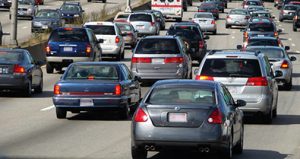
Fatal car crashes in the U.S. rose more than 5 percent in 2016, according to the National Highway Traffic Safety Administration.
The roads were far more dangerous in 2016, with 37,461 people killed in motor vehicle crashes across the U.S. This represents a 5.6 percent increase over 2015. Passenger and motorcyclist deaths reached an 8-year high. More cyclists and pedestrians were killed than in any year since the early 1990s.
The National Highway Traffic Safety Administration recently released the 2016 figures from the Fatality Analysis Reporting System (FARS).
Pedestrian and Cyclist Injuries
Nationwide, 5,987 pedestrians were killed in 2016, representing a 9 percent increase. This is the highest number of pedestrian deaths since 1990. That’s right – the highest in nearly 18 years. Cyclists (called pedalcyclists in the NHTSA report) were also in harm’s way. Across the country, 840 cyclists were killed last year. This is the highest number of cyclist deaths since 1991.
Rise in Passenger Deaths
Last year brought the most passenger deaths in the U.S. since 2008. There was a 4.7 percent increase – or 1,075 more lives lost – over 2015. This counts passengers of passenger cars, SUVs, vans and pick-up trucks. Passengers were only wearing seatbelts in 48 percent of car accidents where seat belt status was known, even though 49 of 50 states have seat belt laws. All 50 states have child passenger safety seat laws.
A good reason to wear a seatbelt: nearly 90 percent of victims who survived fatal daytime crashes last year were buckled in. About 84 percent of nighttime crash survivors were wearing seatbelts.
In Massachusetts, the law requires drivers and passengers to wear seat belts. This law is M.G.L. c.90 § 13A.
Failure to wear a seat belt in Massachusetts is an offense with secondary enforcement. Police officers must have another cause to pull your vehicle over, but if they do and you are not wearing a seat belt, you can be fined $25 for each offense and the violation could impact your insurance rate. You can be fined an additional $25 for each passenger under 16 who is not wearing a seat belt. Older passengers will receive their own $25 fine. But more important than fines, if you are not wearing a seatbelt, you really are putting yourself at great risk.
5 Percent Increase in Motorcycle Fatalities
More than 5,280 motorcyclists were killed in motorcycle crashes last year, a 5.1 percent increase. Again, this was the highest number of motorcycle deaths since 2008. This report did not include a state-by-state breakdown, but motorcyclist deaths in Massachusetts have been climbing in recent years. The Insurance Institute of Highway Safety has reported 44 motorcyclists were killed in Massachusetts in 2015. This was an increase from 2014 and accounted for 14 percent of all traffic deaths in Massachusetts.
Alcohol-Impaired Driving: 28 Percent of All Car Accident Deaths
Drunk drivers killed 37,461 people across the country in 2016, a 1.7 increase over 2015. In Massachusetts, 119 people died in crashes caused by drunk drivers in 2016. This was a 9.2 percent increase. Massachusetts was not alone; 38 states and Washington D.C. saw motor vehicle fatalities caused by drunk drivers rise last year. The other 12 states saw a reduction in fatalities.
Drivers of passenger vehicles were most likely to cause fatal drunk driving crashes; 4,250 drunk drivers caused crashes in 2016, up 3 percent from 2015. Drivers of light pick-up trucks caused 2,052 of these deaths. Drivers of light utility trucks, motorcyclists, vans and large trucks accounted for the rest of fatal crashes. Alcohol-impaired drivers of large trucks caused 58 deaths last year.
Distracted Driving Now Causes 9 Percent of All Motor Vehicle Crash Deaths
Distracted driving caused 9.2 percent of all motor vehicle crash fatalities in the U.S. last year. But the actual number of distracted driving deaths dropped 2.2 percent last year, to 3,450 deaths.
Teens Involved in Fatal Crashes Rise
Drivers age 16 to 20 were involved in 3.6 more fatal crashes in 2016. The actual number of young drivers who died was up .1 percent. But there were 3.6 percent more young drivers, ages 16 to 20, involved in fatal vehicle crashes last year.
About Breakstone, White & Gluck
The Boston car accident lawyers of Breakstone, White & Gluck have over 100 years combined experience representing those who have been injured by negligent or reckless driving. Our attorneys provide aggressive representation and represent those who have been injured by car accidents across Massachusetts, including in Boston, Cambridge, Somerville, Arlington, Waltham and Quincy. If you have been injured, contact our firm for a free legal consultation. Call us at 800-379-1244 or 617-723-7676 or use our contact form.





